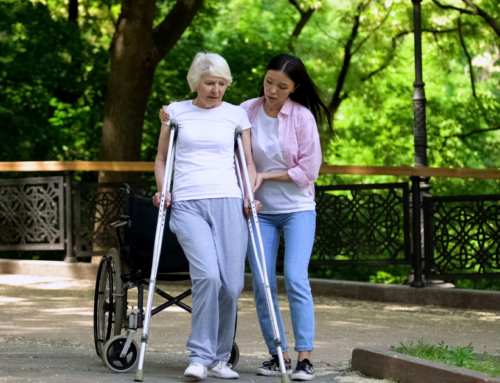If we’re caring for seniors at home, we’re likely going to need some form of assistance. After all, as much as we’re able to help them in basic tasks at home, there are still some aspects of their care that we’re not trained to do. These include administering treatment, prescribing medication, and being able to accurately determine their condition on a constant basis. As we have other responsibilities of our own, we may find it challenging to be able to allocate a lot of our time to our seniors at home.
Sadly, if we don’t have the resources to hire a full-time care provider, caring for our seniors may become much more difficult than anticipated. Thankfully, we can actually rely on services such as telemedicine to be able to give our seniors the kind of care they need.
Telemedicine: The Basics
Telemedicine is a medicinal concept that’s translated to being able to “heal at a distance.” In a practical sense, it aims to provide better diagnosis and treatment to patients and clients across a considerable distance using a variety of information and communications technology (ICT) available for use today. In essence, telemedicine seeks to help care providers to be able to provide accurate data and information to be able to educate fellow health professionals, evaluation and research, prevention and treatment of illnesses, and using information for the accurate diagnosis of other patients and clients.
As per the World Health Organization, telemedicine follows four main principles to be able to properly provide care and services to various clients and patients from a distance. These are:
- Telemedicine is designed to provide support to health care providers and workers to their respective clients.
- Telemedicine should be able to overcome distances and be able to connect health care providers to clients and patients far away from them.
- Telemedicine uses different kinds of ICT – be it apps and software – available to them. These devices may change depending on the needs of the client in question and the resources of the hospital.
- Telemedicine should be designed to improve the overall health of the clients and patients of the professionals using it.
What are the kinds of Telemedicine?
Telemedicine is generally applied to the real world using various kinds of technologies and settings. Professionals and patients can use telemedicine generally in two variants, depending on how the information is transmitted across distances. These include:
- Asynchronous telemedicine tackles the distribution of information across care providers and patients through pre-recorded means. They don’t necessarily have to be in the form of video, but this telemedicine variant makes use of information being sent to patients and doctors that aren’t present in the same area. Examples include:
- Patients and care providers communicating via email or online messaging, where both parties send queries and responses.
- Patients and care providers communicate via pre-recorded video or audio responses, which can help communicate concerns that can’t generally be expressed through text or chat.
- Synchronous telemedicine tackles telemedicine from a simultaneous perspective, where both patient and care provider can provide questions and answers in the same timeframe. Examples can include the following:
- Patients and care providers communicating via calls, where both parties can express themselves and get responses in real time.
- Patients and care providers communicating via teleconferencing, where both parties can see each other and hear each other as they talk.
Telemedicine for Seniors: How Can This Help?
With the above in mind, we can actually find ways to be able to give our seniors the best in care they need with telemedicine. Thanks to this concept, seniors will be able to get in touch with their care providers and other health professionals in order to give them assistance in their various needs without having to go all the way to meet with them. Here are benefits you should consider for your senior that needs medical assistance:
- Timely care and diagnosis from doctors: Health professionals such as doctors have busy schedules, especially given their many patients. Thankfully, telemedicine will help doctors stay on top of your senior’s medical conditions and needs with just a click away. A scheduled teleconference with your senior can help doctors check in on them without having to be present , enabling them to provide accurate assessments based on what they see and what you send them. This will also help you be able to determine whether your senior needs urgent medical attention or if their ailments can be helped with medicine and other treatment.
- Conduct exercises and therapy from a distance: If part of a senior’s treatment from care providers focus on conducting mental exercises and therapy, then it’s preferred that caregivers and other health professionals do the treatment themselves. After all, health professionals will be able to adjust their instructions based on what they see in front of them. Should this be difficult to do because of distance constraints, telemedicine makes it possible for health professionals to be able to conduct therapy and treatment to seniors that can be done over a distance. They may be able to provide instructions to seniors and their relatives as to what they need to do to conduct the therapy properly, how long these sessions should last, and what results to look for.
- Medicine and treatment reminders as necessary: Telemedicine allows caregivers and care providers to be able to provide the necessary reminders to their charges to take their medicine and other treatment. Having a human presence can motivate our seniors to pursue their treatment and even take their medicine in a timely manner. These reminders can be in the form of recorded messages that explains how to take particular medicine, or scheduled calls.
- Companionship in times of loneliness: Aside from treatment and medicine, seniors most especially need the presence of companions and friends to keep themselves happy and motivated. Caregivers specialize in providing these kinds of company to their charges, but it’s not all the time that care providers are able to provide companionship to their clients especially if they have full schedules. However, thanks to telemedicine, they’ll be able to schedule calls to catch up with their clients should there be a need to do so.
Telemedicine for Seniors: Provide Better Healthcare
Telemedicine can give you and your family a lot of benefits, especially when caring for a senior at home. The presence of a caregiver available to provide assistance to your seniors even through the phone or through teleconference can be a great way of giving them reliable care and treatment. Telemedicine allows caregivers to provide reminders, advice, instructions, and other forms of information without having to be physically present, which can be a great way to encourage independence to seniors.
If you’re caring for a senior and still want them to enjoy their lives without the constant presence of a caregiver or a care provider, you should probably ask your caregiving company or health institution if they have telemedicine services available for your needs.







